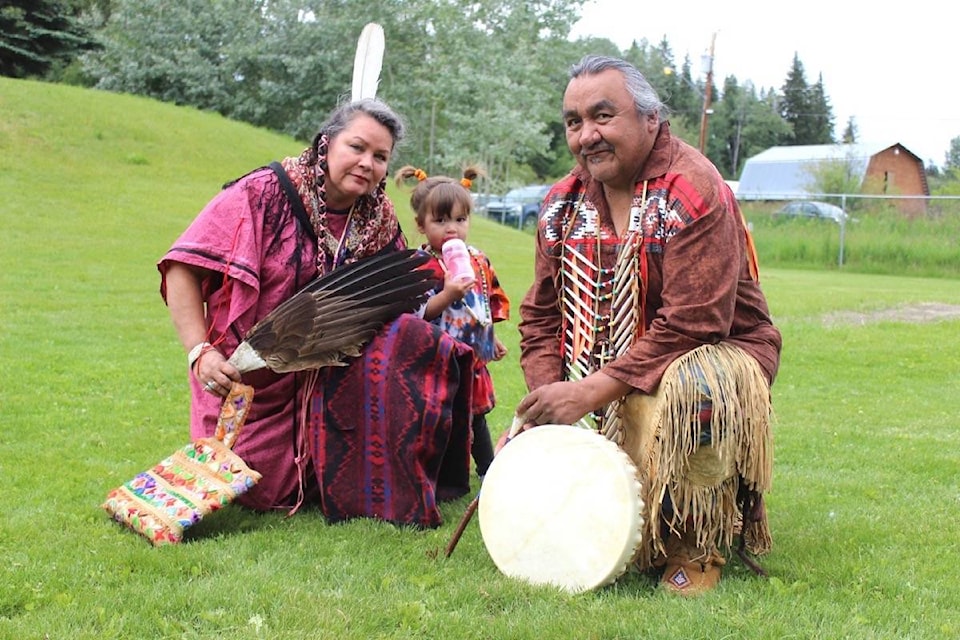Tsq’escen (Canim Lake) First Nation Chief Mike Archie joined children, elders and anyone in between at Eliza Archie Memorial School to celebrate National Aboriginal Day on June 21.
“The celebration of National Aboriginal Day is to acknowledge our history and our culture and our language of our people,” says Archie. “It’s a way of life, that we sustain ourselves and live in harmony with the land. It’s important that today our elders and our youth come together to celebrate that history.”
On the school grounds, people were able to create birch bark baskets, chat with elders and join in on games of stick ball and lahal that took place throughout the day.
A bannock baking contest was held in the school kitchen, while outside children could bounce on the blowup castle, or take part in a long distance run.
The significance of the celebrations is important to Archie, who attended the events with his 2-year-old granddaughter Autumn.
“You look around, you see all the traditions that are shared. Basket making, the medicines on the other table, our elders sitting over there and our buckskin work that puts our clothes together from the animals that were trapped. Dried fish. Those are the essential things that we needed to survive,” he says.
“I have a grandchild here who is two years old and that’s important that she understands that these are things that are of our people and how we lived amongst the land and the animals in respect.”
When European contact arrived, Archie says, First Nations communities had to adapt to residential schools and government policies. The traditional way of living in underground pit homes that changed with the seasons morphed into homes on the reserve. Place names changed.
The celebration of National Aboriginal Day, renamed National Indigenous Peoples Day for 2018’s festivities, is one way of acknowledging those original names and traditions.
“We’ve been here for over 10,000 years. We’ve been here since time immemorial and we’ve lived with the land,” says Archie, noting that while Canada is celebrating 150 years, Indigenous peoples have been here for much longer.
“The Tsq’escenemc, the People of Broken Rock, are connected to the Secwpemc (Shuswap) which is 17 bands. In those bands is a total population of 10,000 and over 180,000 km of traditional territory where our people have hunted, fished and gathered meat and lived off the land to be able to survive.”
Archie learned many stories from his uncle, that he holds to pass on to the youth of the community, but also says that there is something to be shared and learned between both western cultures and First Nations cultures.
When Archie looks to the future of the Tsq’escenemc, he points to a concern for the environment but also to working with the forestry industry, and how the balance of each affects the “rich culture and tradition of our people.”
He also points to the importance of reconciliation and working alongside governments to recognize that process and improve relationships through the process of reconciliation.
“There was an impact on our language and our children were taken from our homes and that really made an impact, but [with] the healing of our people, we’ve come to a place where we are starting to come back again.”
